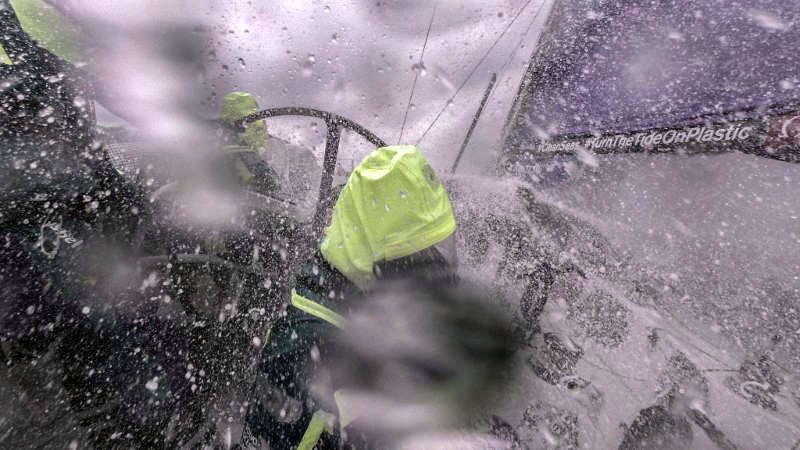A week after leaving Hong Kong, China on the sixth leg of the Volvo Ocean Race bound for Auckland, New Zealand team AkzoNobel is leading the six-boat fleet on the approach to the equator.
The opening seven days of the 11,000 kilometer passage has seen some of the most challenging racing of the round the world race so far, beginning with 72-hours of punishing upwind sailing in strong winds and big waves as the fleet pushed eastward towards the southern tip of the island of Taiwan.
Team AkzoNobel was first out of Hong Kong harbor on February 7 after the crew dealt almost to perfection with the shifty winds that funnel between the city’s towering skyscrapers.
However hours later the team lost time and several places when a headsail change in strong winds on the first night went badly.
The sailors quickly got the boat back up to speed however and as the fleet passed Taiwan at 1000 UTC (1100 CET) on February 8 team AkzoNobel were in fifth place, 13 kilometers off the lead but well within striking distance of the front-running group.
Later that day navigator Jules Salter (GBR) saw an opportunity to claw back some miles on the leading group by tacking early to the north in search of a weather front that would whisk them south east towards Auckland.
Sadly the gambit turned sour when team AkzoNobel and Hong Kong team, Sun Hung Kai Scallywag, were both caught in light winds off the east coast of Taiwan and could only watch and wallow as the other four boats romped away into a 200 kilometer lead.
“It would be easy to get frustrated by setbacks like that,” Salter reflected later. “But we try to focus on the things we can influence – like boat speed and how we sail the boat – because there’s no point in getting upset when the weather doesn’t do what you hoped or expected it to do.”
Happily for team AkzoNobel the weather gods did not punish the crew for too long and within 48 hours a chance to stage a comeback emerged as on February 12 the fleet finally turned south east and began to accelerate.
Positioned to the west of the main group, team AkzoNobel and Scallywag were able to save significant time and distance by making the turn earlier – allowing them to quickly reclaim the majority of their previously lost miles.
The sailing was ultra-fast with 20-knot winds speeding the boats along at up to 56 kilometers per hour, meaning extreme firehose spray conditions for the sailors working on deck and a white-knuckle rollercoaster ride for those trying to eat or sleep down below.
This drag race continued over the next 24 hours with team AkzoNobel’s position becoming stronger and stronger until eventually at 0200 UTC (0300 CET) on February 13 the team moved into first place as the fleet felt the first effects of the northern hemisphere north easterly trade winds.
“We knew there were plenty of opportunities to get back in touch with the leaders because this leg is packed with transitions from one weather system to the next,” explained helmsman and sail trimmer Justin Ferris (NZL). “Finally, the weather came right for us and we’ve managed to pop out in front of the others again.
“It was a pretty busy few days. No one went to bed on the last night and we all stayed on deck as we worked our way through the transition from the front to the trade winds. That’s great for our position in the race but also for team morale too.”
Image © Richard Edwards/Volvo Ocean Race

